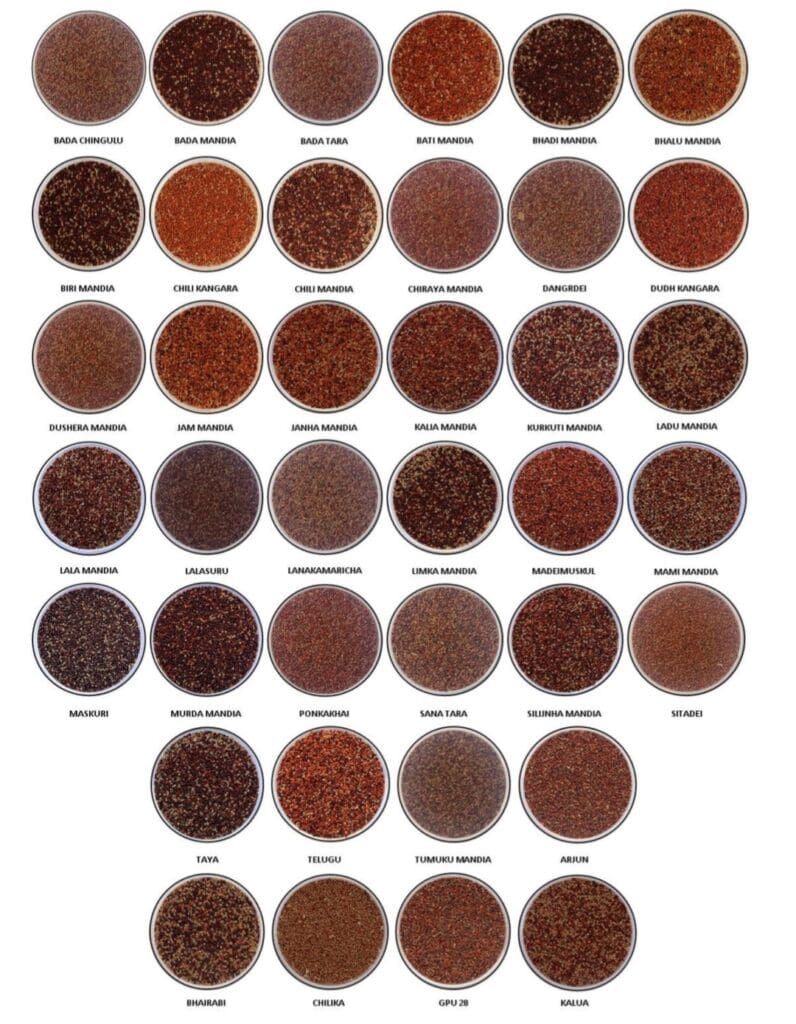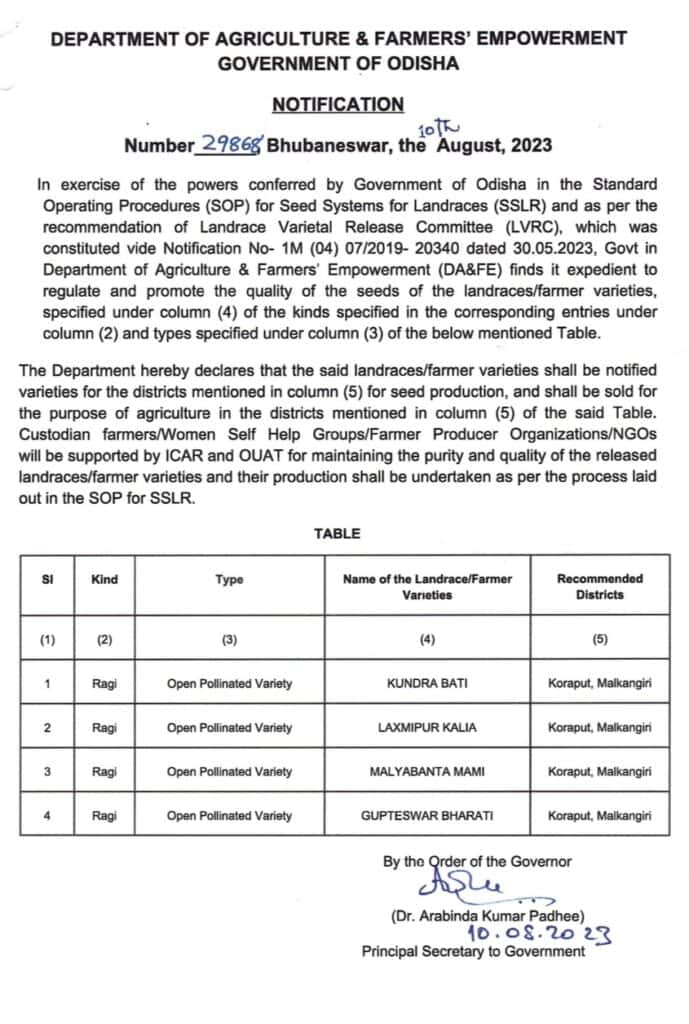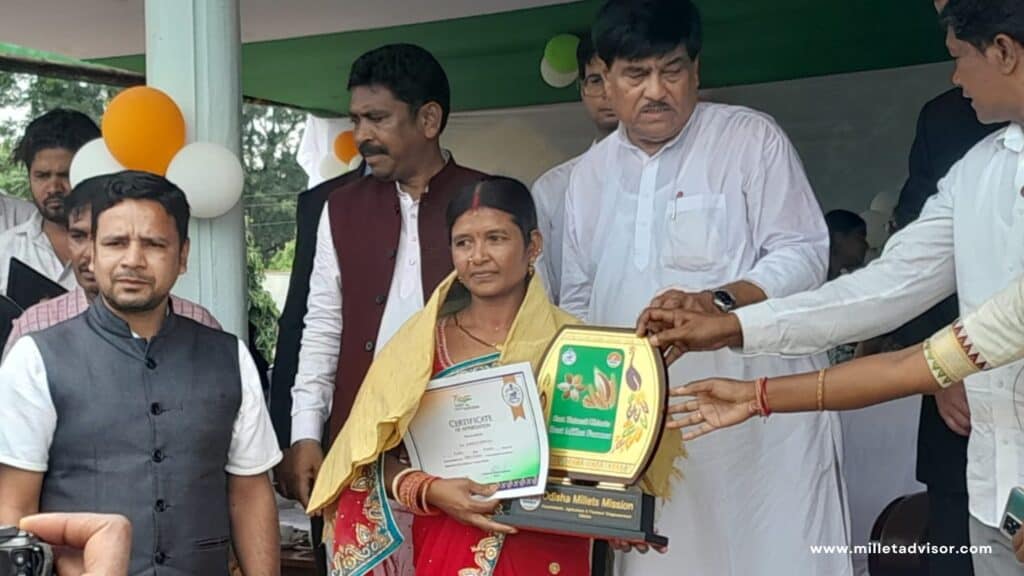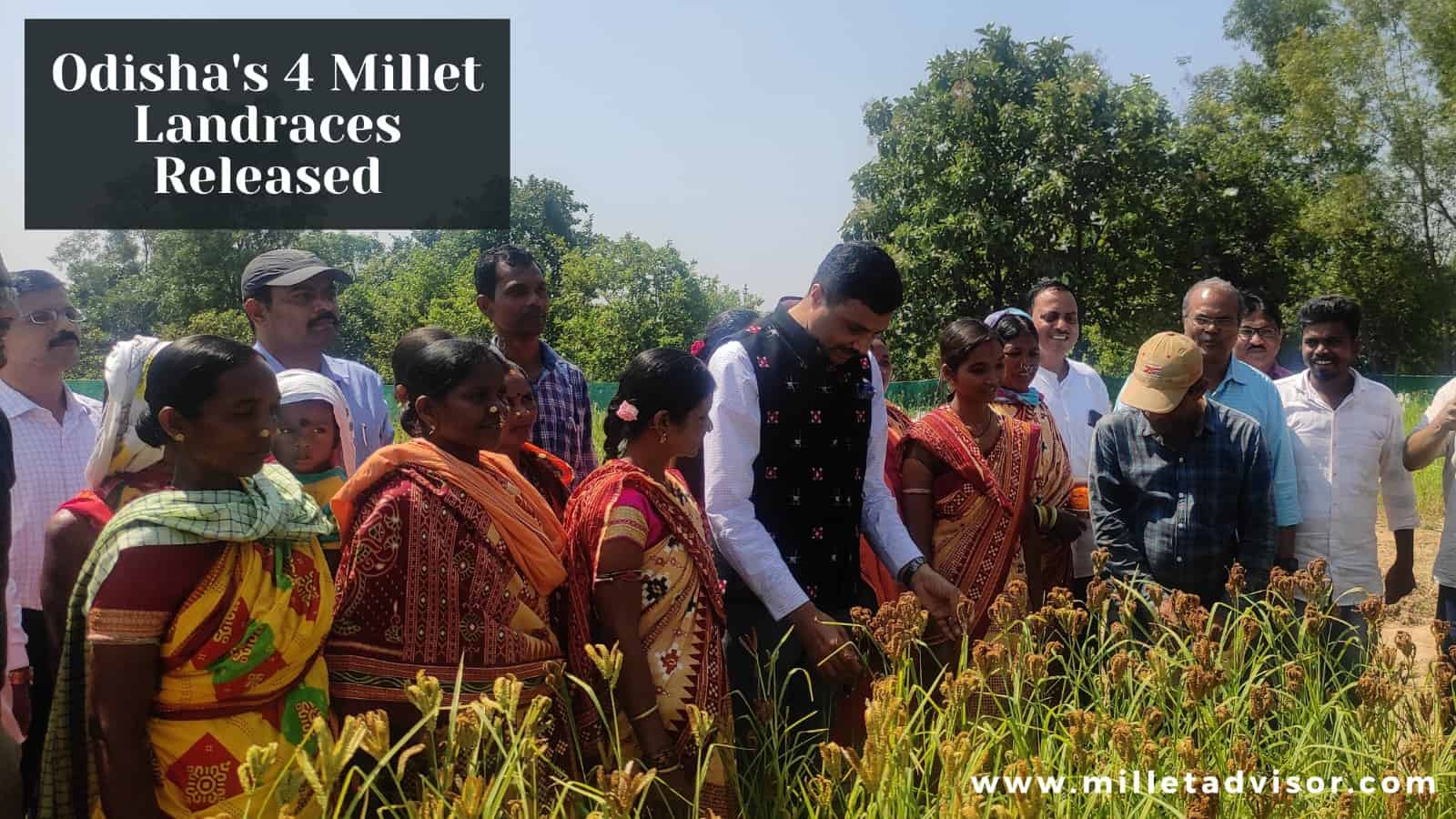Table of Contents
Odisha’s Millet Landraces:
In a groundbreaking stride towards agro-biodiversity preservation and sustainable agricultural practices, Odisha has etched its name in history as the first Indian state to formally release four indigenous landraces of finger millet (Eleusine coracana). These exceptional landraces, named Kundra Bati, Laxmipur Kalia, Malyabanta Mami, and Gupteswar Bharati, have been designated as notified varieties within the districts of Koraput and Malkangiri, signifying their strategic role in bolstering seed production and agricultural growth.
Nurturing Diversity: From Custodians to Consumers:
The orchestrated release of these landraces symbolizes a collaborative effort between custodian farmers, women agriculturalists, and farmer collectives, championed by research organizations. This concerted endeavor is driven by the belief that agricultural diversity is the cornerstone of sustainable food systems, safeguarding local traditions, bolstering climate resilience, and enhancing food security.
Seeding a Sustainable Future: Unveiling the Process:
Guided by the Department of Agriculture & Farmers’ Empowerment of the Government of Odisha, the initiative aligns with the Standard Operating Procedure (SOP) for Seed Systems for Landraces. These traditional finger millet varieties, deeply intertwined with local ecosystems, exhibit exceptional resistance to pests, adaptability to climatic shifts, and elevated performance in organic farming environments.
Kundra Bati (Bati Mandia) marked its place in the research study ”Genotypic variability of drought-tolerance responses in underutilized indigenous finger millet genotypes” conducted by the Department of Biodiversity and Conservation of Natural Resources, Central University of Odisha, Koraput headed by Shri. Debabrata Panda.

A Glimpse of Expansion: The Journey Ahead:
Initially introduced in Koraput and Malkangiri, the program’s scope is poised for expansion, contingent upon the success and acceptance within the local community. Agriculture & Farmers’ Empowerment Minister, Ranendra Pratap Swain, envisions these landraces disseminating their benefits across Odisha’s ten agroclimatic regions.
A Collaborative Blueprint for Growth:
Odisha’s trailblazing release of these four Finger Millet landraces reverberates far beyond state boundaries, emerging as an illuminating blueprint for other states and nations. This pioneering step beckons the collaboration of policymakers, research institutions, and communities to herald the revival of heritage crops, fostering local economies, and rekindling traditional agrarian practices.
A Tribute to Heritage: Fostering Agrobiodiversity:
Principal Secretary of the Department of Agriculture and Farmer’s Empowerment, Government of Odisha, Dr. Arabinda Kumar Padhee, extolled the novelty of this initiative, recognizing it as a tribute to the tireless efforts of tribal farmers in preserving ancient grains. He lauded the seed systems for landraces (SSLR) approach as a testament to honoring local agro-biodiversity, nurturing climate resilience, and invigorating societal well-being.

Seeds of Resurgence: A Mission in Motion:
Launched in 2017, the Odisha Millet Mission (OMM) embarked on the revival of millets in both fields and plates. Enshrined within the OMM’s objectives is the vital task of conserving and promoting indigenous landraces via a comprehensive seed system for landraces. This endeavor is especially poignant given Odisha’s rich tapestry of 62 tribal communities that have long safeguarded local millet varieties.
Scientific Rigor Meets Cultural Wisdom:
The release of these landraces stems from meticulous scientific assessment intertwined with cultural appreciation. A consultative process involving the Indian Council of Agricultural Research (ICAR), Odisha University of Agriculture and Technology (OUAT), technical experts, grassroots NGOs, and most notably, custodian tribal farmers, was pivotal in developing the Standard Operating Procedure.
Women in Custodianship: A Paradigm Shift:
For the first time in India, women custodian farmers have been seamlessly integrated into the varietal release committee. This shift underscores the mission’s holistic approach to diversity, acknowledging the integral role women play in the agroecosystem and the preservation of agricultural heritage.

This transformative step positions Odisha as a beacon of agricultural renaissance, sowing the seeds of a nourished, sustainable future. The release of these indigenous finger millet landraces is not merely a commendable act; it is a pledge, resonating across the agricultural landscape, that the custodians of tradition and nature shall continue to thrive in harmony.
Please give your valuable feedback and suggestions in the comment section below and don’t forget to tick the ”Notify me of new posts by email” so that you never miss my future posts.
Author: Tapas Chandra Roy, A Certified Farm Advisor on Millets, ‘Promoting Millets from Farm to Plate’ and an Author of the book -” Millet Business Ideas-Empowering Millet Startups”. In a mission to take the forgotten grains- Millets to Millions. To remain updated on my blogs on Millets please subscribe to my newsletter and for any queries please feel free to write to [email protected]


Really a very good informative